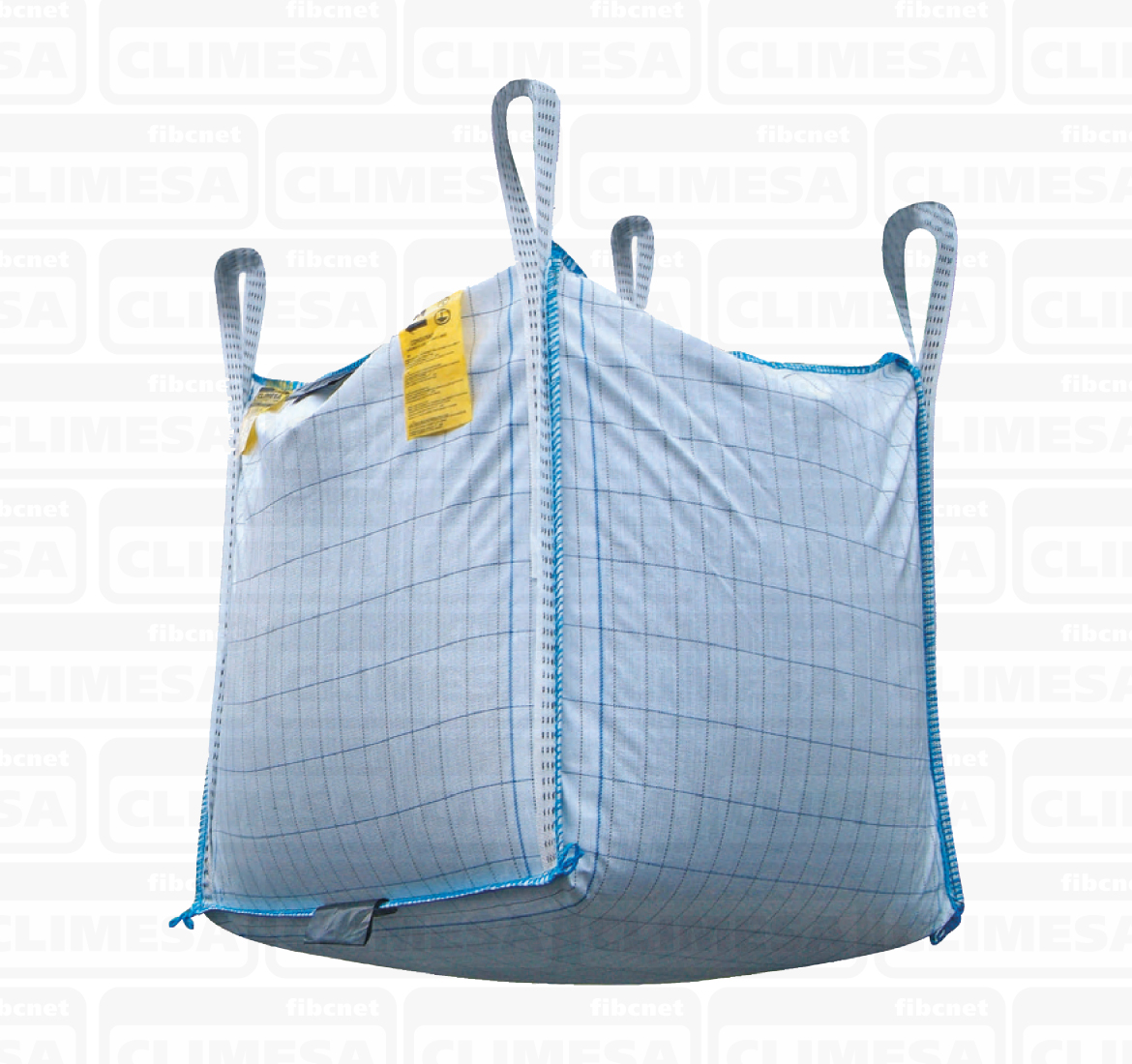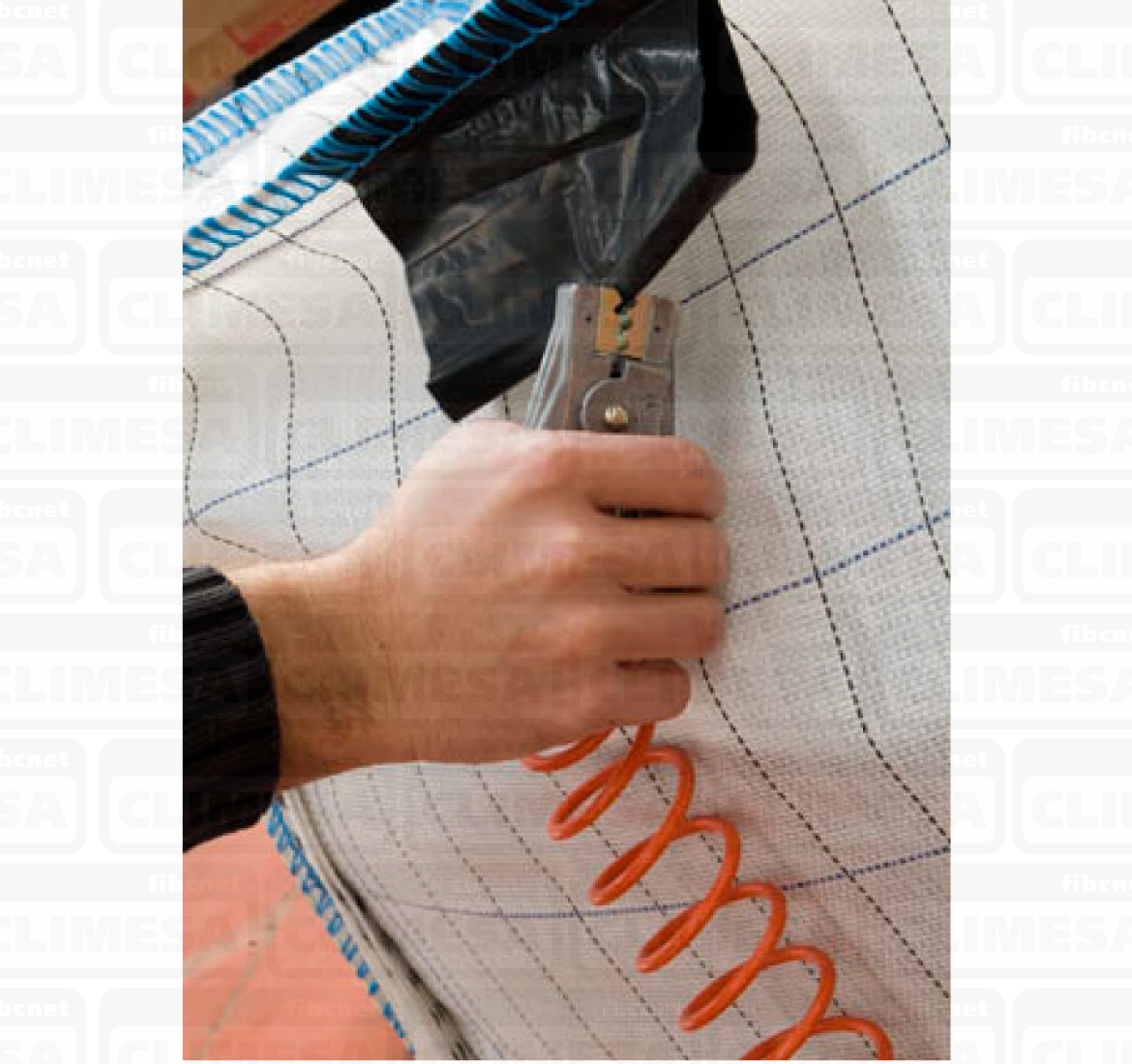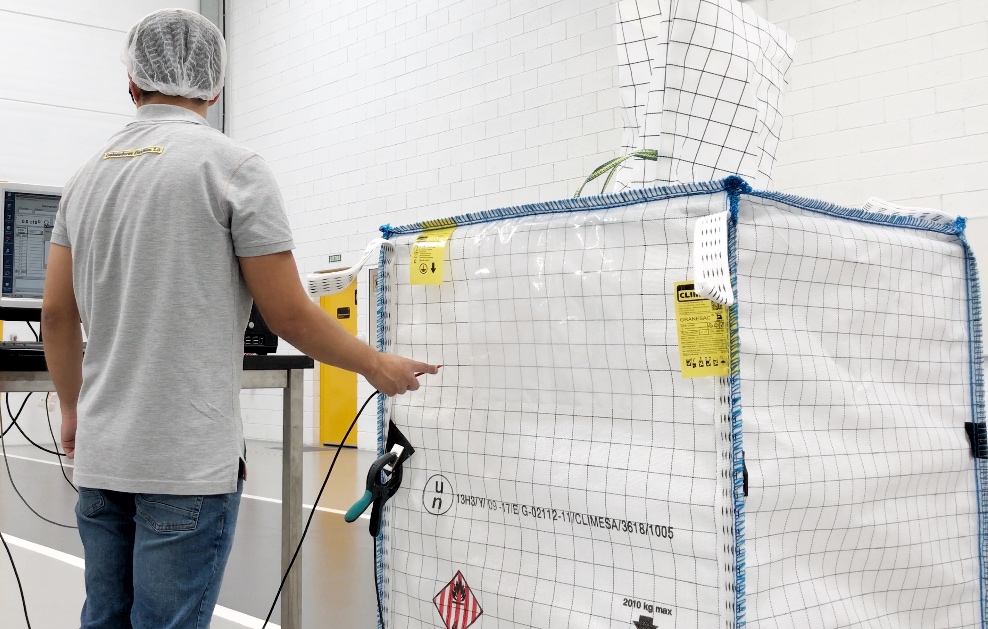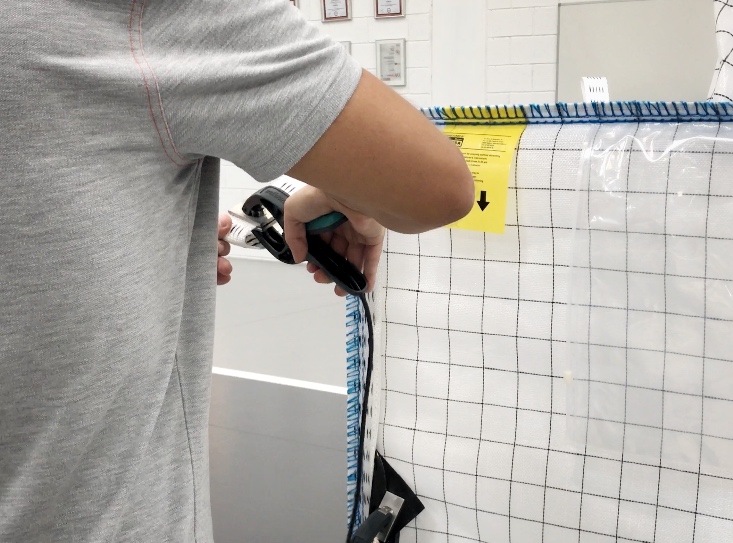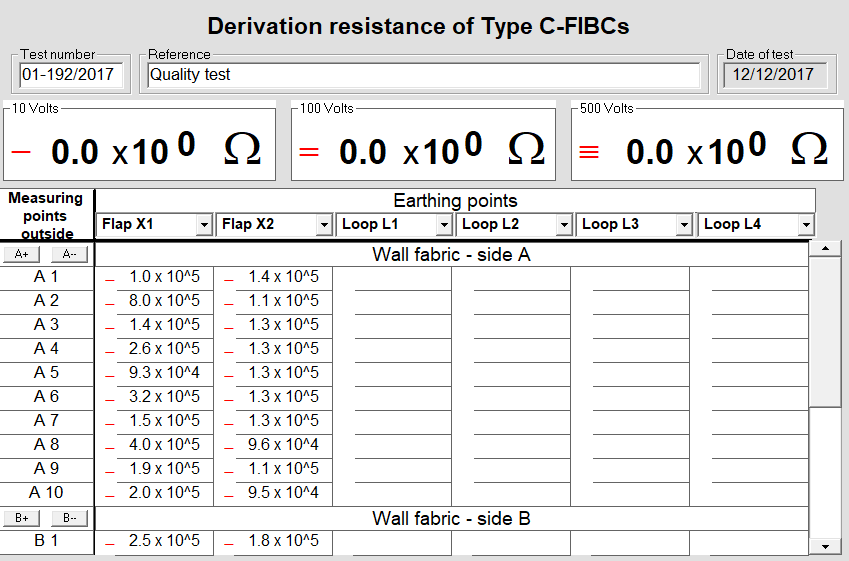CONDUSAC®
Conductive Flexible Containers
Type C Flexible Container
Specifically designed to work in flammable atmospheres (including those containing hydrocarbon vapors).
These containers are made of polypropylene raffia with conductive fibers. The grid created by intertwined threads conducts the static electricity generated.
This type of Flexible Containers requires an earthing conductor.
ADDITIONAL INFORMATION
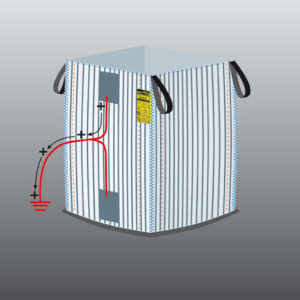
R < 108 Ohmios.
Type C Flexible Container
For CONDUSAC® to work properly, the conductive loop must be correctly earthed with a suitable clip. Nevertheless, Flexible Containers usually include redundant earthing systems, such as the handles touching the metal chain and the hoisting device. Not earthing them may lead to high-current discharges.
The material used has an resistance of under 108 ohms, as required by the IEC 61340-4-4 Standard (Electrostatics Part 4-4: Standard test methods for specific applications – Electrostatic classification of flexible intermediate bulk containers (FIBC)).

